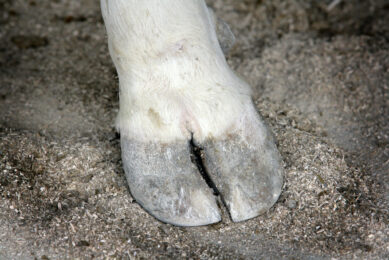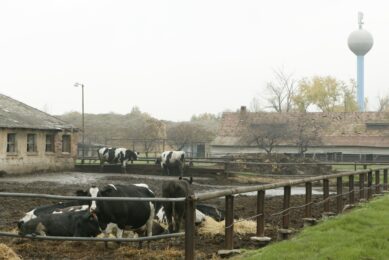ASF Dominican Republic: “We are up against an invisible enemy”
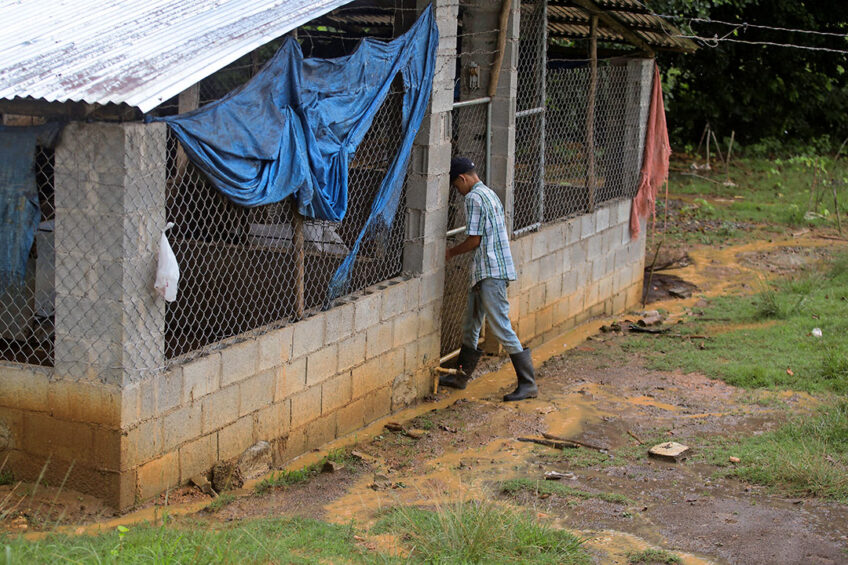
Since mid-2021, the African Swine Fever (ASF) virus has found its way into the western hemisphere, emerging in the Dominican Republic and Haiti. In the Dominican Republic, the virus is creating a headache – and a permanent solution will be difficult to achieve. 2 Dominican pig health experts reflect on the situation: “Elimination is not that simple.”
The 1st of July 2021 is a date to remember in the Dominican Republic – though it is not for a pleasant reason. That is when ASF was rediscovered in the country after an absence of more than 40 years. In a matter of months, the virus was reported in 29 of the 32 provinces of the Caribbean country. In addition, neighbouring Haiti, with which it shares the island Hispaniola, also became infected. By March 2022 about 180,000 pigs had been culled in the Dominican Republic in an attempt to stop the spread of the virus – but as about 35% of the country’s pigs are kept in backyard farms, exact total losses are hard to estimate.
‘Last resort’
Veterinarian Dr Francisco Israel Brito, president of the Dominican Federation of Pig Producers, and Professor Joaquín Paulino, attached to the agricultural university ISA in Santiago de los Caballeros, are 2 of the agricultural leaders who have watched the situation unfold in the country, which was also affected by ASF in the late 1970s. At the time, total depopulation of all pigs proved to be the solution – but in 2022 that solution should be considered “of last resort”.
While the drop in pork supplies has been replaced by more imports from the United States, the 2 experts think that in 2022 the island’s total pig population has dropped by 25% as a result of ASF.
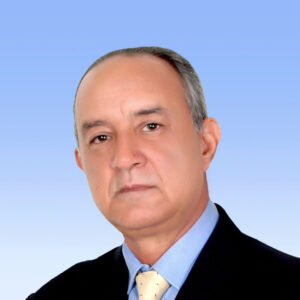
How would you characterise the ASF situation in the Dominican Republic at the moment?
Dr Francisco Israel Brito: “They have formally found 1,000 outbreak locations. Keeping in mind that the Dominican Republic has an area of over 48,000 km2, this number in such a small geographical area has led us to believe we have a very serious epidemiological situation.”
Prof Joaquín Paulino: “Of the 32 provinces in the Dominican Republic there are 29 provinces infected. The provinces that did not get infected (Azua, Hato Mayor and El Seibo) did not because the pork production there is minimal or almost absent. It is a situation that is very complex for our nation, which is now also fighting many economical problems as well as unemployment. Many people who used to work in pig production are now without work. It has cost the government over US$ 22 million dollars for compensation purposes. The situation is very serious.”

How are the largest farms dealing with the outbreaks?
Dr Israel Brito: “The pig industry in the Dominican Republic is quite diversified. Prior to ASF there were over 25,000 producers. Of those, 90% were small producers, having fewer than ten sows – and those are the ones that have been affected hardest.
“The largest farm in the Dominican Republic has 2,800 sows. Just below that, there are various other farms with more than 1,000 sows – some of those were affected by the virus, especially a farrow-to-finish farm with 1,200 sows and another one, a multisite farm, also of 1,200 sows. Then there are various farms with 500 sows or more, of which some have also been affected.
“In addition, the major genetics centre, Biogenetik, was affected by ASF virus in the beginning of February. This centre, with very good biosecurity, had 200 boars and over 200 GGP sows with high genetic value, which contributed to a high degree to the development of the national swine industry.”
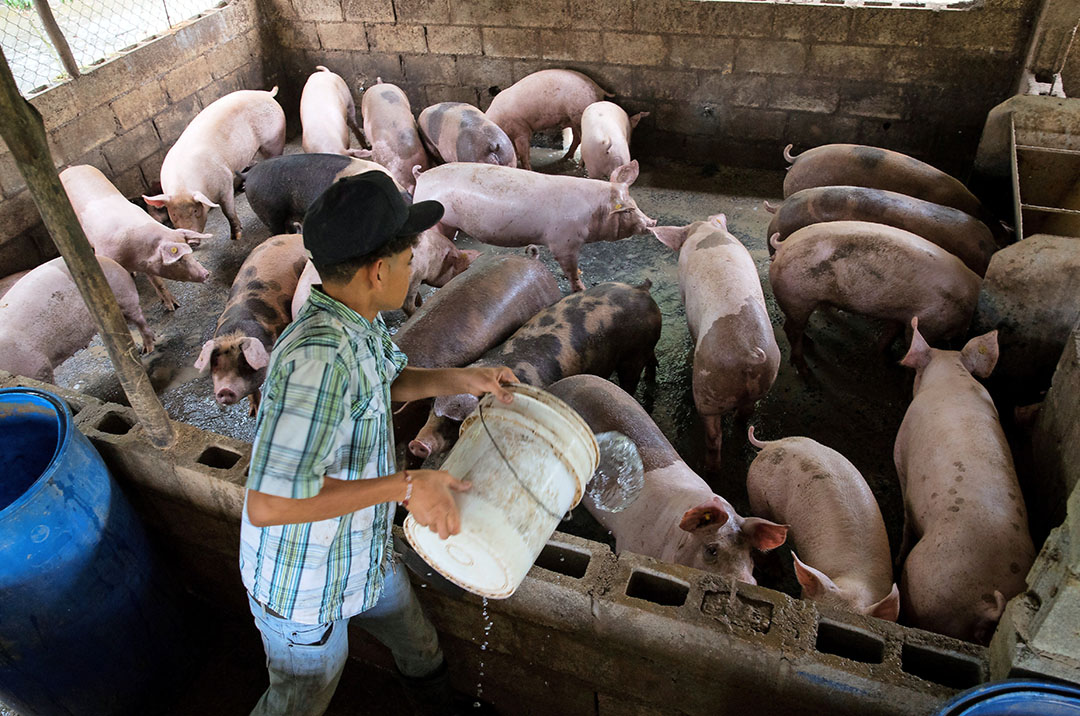
Is it possible to tell where the virus came from? To which strain does it have most resemblance?
Dr Israel Brito: “There are laboratory results. We are collaborating with the reference laboratory in Plum Island in New York. The diagnostics of the identification of the virus showed that it comes from Russia, according to the experts. In fact, at the moment there are 3 strains circulating in the Dominican Republic.”
3 Strains? Would that mean that there has been more than one infection, or has the virus mutated on the island?
Dr Israel Brito: “At the moment we have not determined whether there has been a mutation in the Dominican Republic. We do know that we have cases where the virus had very low pathogenicity, very different to occasions where the virus was very virulent. That is what led us to believe we have more than one strain of the virus present.”
What has been the effect of ASF on swine producers – do they still see a future for themselves?
Dr Israel Brito: “At the moment many smaller producers have left the industry. Medium producers have decreased production, and larger producers have also decreased production because of the fear of the disease getting onto the farm. And at the moment I don’t think there is anybody who is willing to invest in the industry.”
At this moment the amount of pork in the market is the same again. Most Dominicans have the habit, luckily, to consume fresh meat
What has been the effect of ASF on pork prices in the Dominican Republic?
Dr Israel Brito: “In March 2022, prices were 9% higher in comparison to when ASF showed up in the Dominican Republic. Initially, as a consequence of the virus, the prices dropped by 20% because there was a significant drop in consumption. After that price levels went up again; that was mostly due to a significant reduction of pork on the market. Now consumption is back to normal. That the prices are higher than before is related to the higher price of raw materials.”
Prof Paulino: “This recuperation of consumption is related to a campaign of making customers aware through radio, television, newspapers and all social media networks, set up by the Ministry of Agriculture. It is aimed at making the end user understand that ASF virus does not affect human health.”
And now the amount of pork on the market is the same again?
Dr Israel Brito: “At this moment the amount of pork in the market is the same again. Most Dominicans have the habit, luckily, to consume fresh meat. It is difficult, for most producers have difficulty competing with the prices produced by larger farms.”
How is the market supplied with sufficient amounts of pork?
Dr Israel Brito: “Most comes from the United States. The Dominican Republic possesses a number of supermarket chains, but in the country there is a large informal industry regarding fresh pork and this section contributes considerably to pork consumption. Supermarkets only form a minor part of pork sales in the Dominican Republic.”
Until now, the Dominican government has compensated all the producers who had to cull pigs
How do producers deal with carcasses related to ASF?
Dr Israel Brito: “When the outbreaks started, and pigs started dying, unfortunately we did not have any laboratory that could do diagnostics in 24 hours. Immediately after the government was notified, they proceeded to cull all animals on the farm and bury the carcasses. That was regardless of the size of the farm, to avoid the dissemination of the disease.”
In Asia we’ve seen a lot of different disposal methods, like dumping carcasses at the roadside or throwing them in rivers. Have these things also happened in the Dominican Republic?
Dr Israel Brito: “Situations like those have occurred, but at a minor scale. Until now, the Dominican government has compensated all the producers who had to cull pigs. They are currently discussing a new payment formula to give them a new and better compensation which is closer to the market price. That is irrespective of farm size.”
In your opinion, do all outbreaks get reported – or are there cases when outbreaks do not get reported to the authorities?
Dr Israel Brito: “It is possible that some very small producers may not have spent time reporting the disease, because they didn’t realise that the animals were infected until it was too late. And by the time they did realise, the pigs were dying. But generally speaking, the people do report it.”
What do the authorities do to stop ASF?
Dr Israel Brito: “The principle until now has been to eliminate all the outbreaks that occurred. We are currently developing a plan to not only cull those animals that have been diagnosed but to cover those that could be a risk for the next big groups of pigs. They call them “perifocus” areas, that is, areas where they have not diagnosed the disease but that may represent a risk or is a potential area they would like to eliminate as it could be a potential source of the disease.”
Do you feel that the authorities are currently doing enough?
Dr Israel Brito: “From an economic perspective, we do feel that they have been doing enough. From an epidemiological perspective, there could have been a lot more done by government.
“The government could have done a lot better to not only control and eradicate in specific areas where the outbreaks took place on those specific farms, but also the government should consider the radius and the area that was close to that farm to prevent any recontamination coming from the nearby area. So the government should have done much better than they did – as they were just controlling the specific area where the positive cases were diagnosed.”
Is there a policy formulated for how to get out of the crisis?
Dr Israel Brito: “There is currently an APHIS mission set up in the Dominican Republic, working in conjunction with national and local authorities, trying to formulate a plan of immediate steps and longer term steps with the purpose of eradicating the disease from the country.”
Is there a chance ASF virus will leave the island of Hispaniola? And which countries should worry most?
Dr Israel Brito: “Obviously, yes. We are a very touristy country – think of white beaches and the sun – and with direct contacts with countries in Europe, it is highly likely that the virus will move again.
“We have various direct flights with the United States, as well as Panama, the south of Mexico, Chile, Colombia, Costa Rica and Venezuela. But basically the main communication is with the United States, where about 2 million Dominicans are living.”
With the ASF outbreaks in the 1970s, it was decided to depopulate the whole island of pigs, let the virus disappear and then repopulate. Would you think that this is an option now to pursue?
Dr Israel Brito: “The situations of the Dominican pig industry in 1978 and 2022 are totally different. Back then we had about 400,000 pigs. Nowadays, just before the virus came, we had 1.8 million pigs. This industry represents a huge amount of money. That is not only in the pigs, but also in the infrastructure, where you will also find the genetic value of the pigs.
“Nowadays, the industry in the Dominican Republic represents a value of US$ 700 million, all in animals. And that, obviously, for a government like ours, is a significant amount of money and not very easy, as the government is also fighting the consequences of the Covid-19 pandemic.
“In addition, the situation in the world regarding supply in the food chain is only getting worse due to the problems between Russia and Ukraine. The Dominican government has tried to minimise its impact on the food chain.
“The spread of the virus throughout the Dominican territories, however, forced us to think that depopulation eventually may need to be a solution – albeit a solution of last resort. But we are talking about a virus for which there is no vaccine – and sooner or later it will arrive at farms.”
Prof Paulino: “I agree. Recently I tweeted about the risk for the American continent if ASF would leave the country. It would then go on to affect more than 15 million sows, and around 250 to 300 million pigs would be affected. That would be a catastrophic economic loss not only for the American continent but also for the entire world, and would also lead to unemployment.
“Given the risk of having the virus spread in the American continent, it is my belief that the cost and the responsibility should be shared with the larger producers: United States (more than 4 million sows), Brazil (more than 4 million sows), Canada and Mexico (both with more than 1 million) and perhaps Colombia (500,000 sows).
“There are certain benefits of depopulating the Dominican Republic. Right now there are diseases endemic on the island, and by depopulating we would eradicate them. We are talking about Classical Swine Fever (CSF), Porcine Epidemic Diarrhoea (PED), swine influenza. It would give Dominican producers the opportunity to participate in the international market, something they are not able to do right now.”
Is there a national debate going on as to which route to take? Ranging from learning to live with it and increasing biosecurity – to on the other side total depopulation?
Dr Israel Brito: “Obviously, yes. With over 25,000 producers there are always going to be very distinct opinions. But at the moment in the Dominican Republic, given the current spread, there are no such levels of biosecurity that we could control it. Right now being infected is just a matter of luck.”
A quick look at your neighbours: does the ASF situation in Haiti – one of the poorest countries in the world – worry you?
Dr Israel Brito: “Evidently, yes. And it should not only worry the Dominican Republic, but others as well. Given the social and political issues in Haiti, we can understand that this specific situation is not one of their priorities. Haiti has diagnosed the disease in the east and the west part of the country. In the east there is a frontier with the Dominican Republic where we have 362 km of very porous frontier. And also the situation in the west that is very close to Jamaica. What we are proposing is that we will have a 30 km buffer (sanitary strip) from the border with Haiti where we cannot have swine production within the Dominican territory.”
When a virus comes to a country as small as ours, where the host of the virus is pigs, elimination is not that simple
What is your opinion on the longer term situation for ASF on the island? Is it there to stay or will it be eradicated at some point?
Dr Israel Brito: “That is a difficult question to answer, as we all know the virus is resistant. It can stay for years in the bone marrow when refrigerated, for instance. When a virus comes to a country as small as ours, where the host of the virus is pigs, elimination is not that simple. It is going to require a programme for a long time, and we are going to see its outcomes. The speed with which the outbreak locations have been presenting themselves shows that it is difficult to predict what is going to happen. We are up against an invisible enemy. It is difficult to control, and any object could be a fomite that could transmit the disease.”
Prof Paulino: “I would like to add that we have known about this virus since 1921, when it was first described in Kenya. And now it has reached 53 countries in five continents globally. We have seen the situation in Russia, where both farms as well as wild boar have been affected for 15 years. We have seen the situation in China, with over 9 billion km2 – that big an expansion and they are still dealing with the virus. Or the Philippines. There they tried to eradicate the virus but they did not manage to do so. I want to know of a country that has managed to successfully eradicate the virus.”
Belgium and the Czech Republic have – having limited outbreaks in wild boar only.
Prof Paulino: “Those were exceptional cases. The others have had the virus for many years and haven’t been able to eradicate it.”
So do you think that in five years or so it will be over?
Dr Israel Brito: “As I see it now – no. I don’t think that the virus can disappear from the Dominican Republic in that time.”
The interview was held with the kind cooperation of Linda Brito and Dr Fausto Solis.



